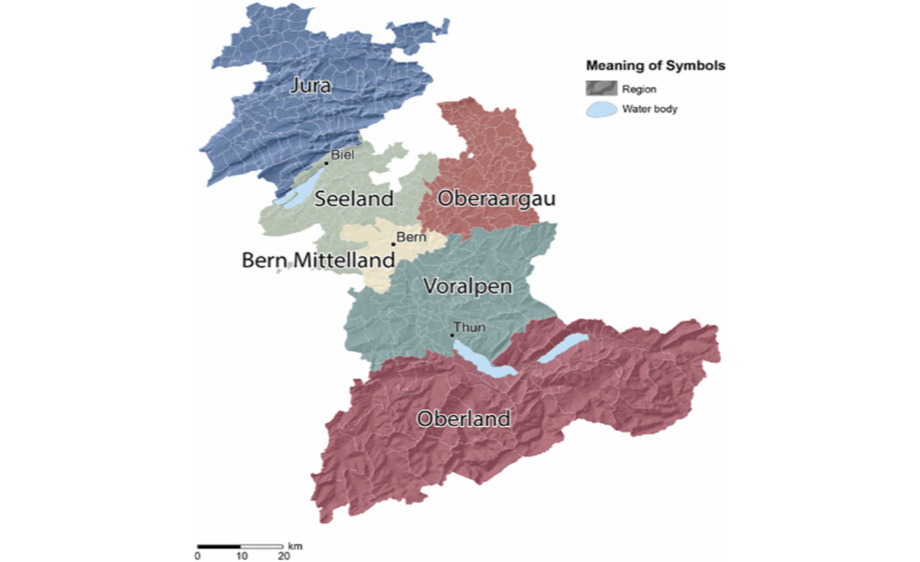New Publication
From pandemic to endemic: Spatial-temporal patterns of influenza-like illness incidence in a Swiss canton, 1918–1924
Economics & Human Biology, vol. 50

Marco Bernhard, Corina Leuch, Maryam Kordi, Oliver Gruebner, Katarina L. Matthes, Joël Floris, Kaspar Staub
Abstract
In pandemics, past and present, there is no textbook definition of when a pandemic is over, and how and when exactly a respiratory virus transitions from pandemic to endemic spread. In this paper we have compared the 1918/19 influenza pandemic and the subsequent spread of seasonal flu until 1924. We analysed 14,125 reports of newly stated 32,198 influenza-like illnesses from the Swiss canton of Bern. We analysed the temporal and spatial spread at the level of 497 municipalities, 9 regions, and the entire canton. We calculated incidence rates per 1000 inhabitants of newly registered cases per calendar week. Further, we illustrated the incidences of each municipality for each wave (first wave in summer 1918, second wave in fall/winter 1918/19, the strong later wave in early 1920, as well as the two seasonal waves in 1922 and 1924) on a choropleth map. We performed a spatial hotspot analysis to identify spatial clusters in each wave, using the Gi* statistic. Furthermore, we applied a robust negative binomial regression to estimate the association between selected explanatory variables and incidence on the ecological level. We show that the pandemic transitioned to endemic spread in several waves (including another strong wave in February 1920) with lower incidence and rather local spread until 1924 at least. At the municipality and regional levels, there were different patterns of spread both between pandemic and seasonal waves. In the first pandemic wave in summer 1918 the probability of higher incidence was increased in municipalities with a higher proportion of factories (OR 2.60, 95%CI 1.42–4.96), as well as in municipalities that had access to a railway station (OR 1.50, 95%CI 1.16–1.96). In contrast, the strong fall/winter wave 1918 was very widespread throughout the canton. In general, municipalities at higher altitude showed lower incidence. Our study adds to the sparse literature on incidence in the 1918/19 pandemic and subsequent years. Before Covid-19, the last pandemic that occurred in several waves and then became endemic was the 1918–19 pandemic. Such scenarios from the past can inform pandemic planning and preparedness in future outbreaks.